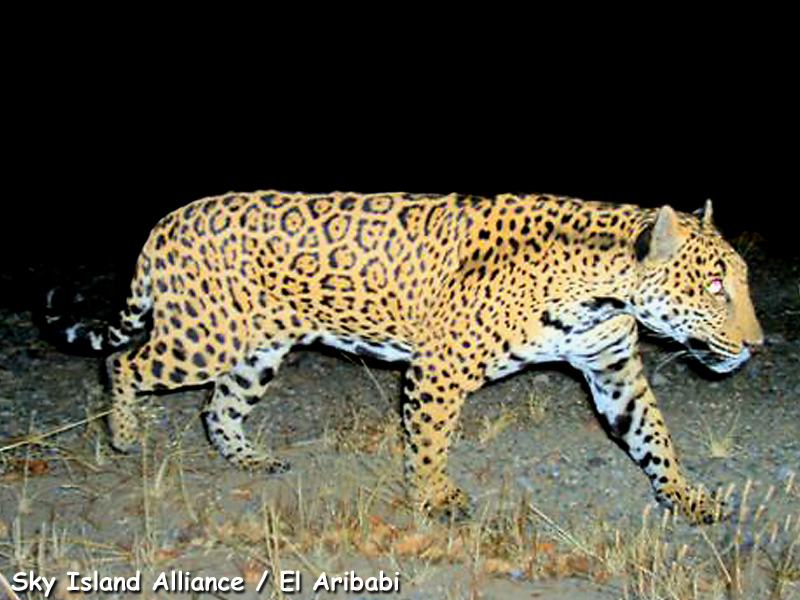updated 3/6/2017 – additions are in bold italics
Please ask the USFWS to protect the habitat and pathways that jaguars need to recover in the United States by submitting comments on their recently released Jaguar Draft Recovery Plan. The plan could be improved in a number of areas, and your voice can amplify the need to address these key issues.
The recent sighting of a jaguar in the Huachuca Mountains and the even more recent news of a jaguar in the Dos Cabezas range show that if we protect intact habitat and open pathways for jaguars, they will continue to repopulate the Sky Islands on the U.S. side of the border!
In your comments, be sure to tell the U.S. Fish and Wildlife Service:
Populations of breeding jaguars belong in the U.S., and I want them to fully recover here in southern Arizona.
Recovery of the species to their former range requires you to protect and restore movement pathways that span the U.S.–Mexico border and connect population strongholds in Sonora to suitable habitat in the U.S.
Long-term recovery of the jaguar requires adequate consideration of climate change. USFWS must assess and consider the likely effects of climate change on the northern range of the jaguar, including potential projected range shifts of current populations in Sonora to habitat further north in the U.S.
Proposed border walls and other infrastructure along the U.S.–Mexico border will damage suitable habitat and hinder recovery of the jaguar in the U.S. The plan must maintain the permeability of crossborder corridors to support jaguar movement.
Full inclusion of these priority trans-boundary corridors is vital to the jaguar: the Sierra San Luis linkage to Animas & Peloncillo, the entire San Pedro River riparian corridor, Sierra Chivato linkage to Huachucas, San Antonio linkage to Patagonia, Sierra Cibuta linkage to Pajarito & Atascosa, and Sierra Pozo Verde linkage to Baboquivari.
Protect habitat and linkages that will support breeding populations of jaguars in the U.S. and Mexico through 2066.
Improve wildlife linkages across barriers such as Highway 2 and 15 in Mexico and I-10 in the United States.
You can submit your comments on the plan through March 20, 2017. Submit comments by email to [email protected] or mail them to this address: U.S. Fish and Wildlife Service, Arizona Ecological Services Office, 9828 North 31st Avenue, #C3, Phoenix, AZ 85051–2517.
You can download the full Jaguar Draft Recovery Plan is available on the U.S. Fish and Wildlife Service website (PDF).
Thank you for taking action and making your voice heard on this important plan!

Jaguar (c) Sky Island Alliance/El Aribabi
